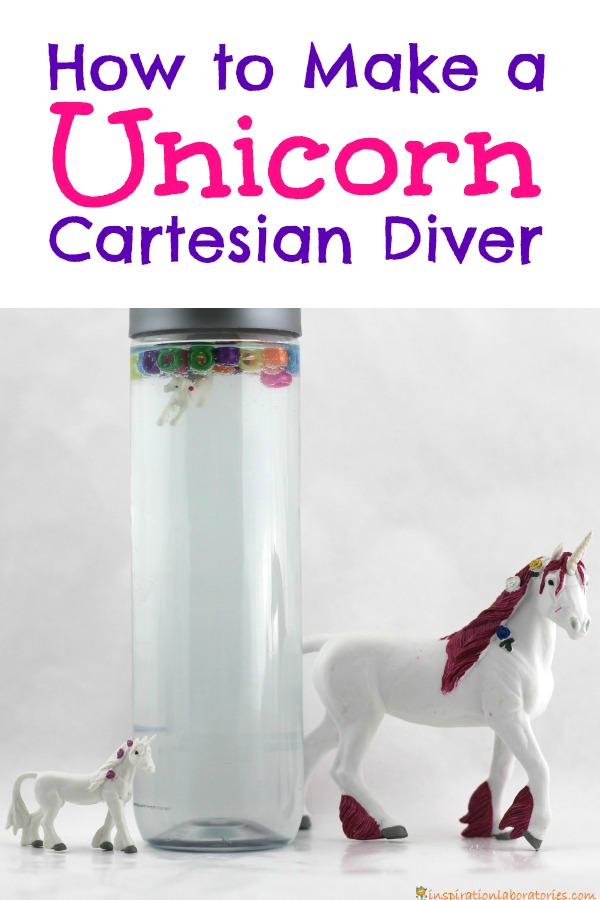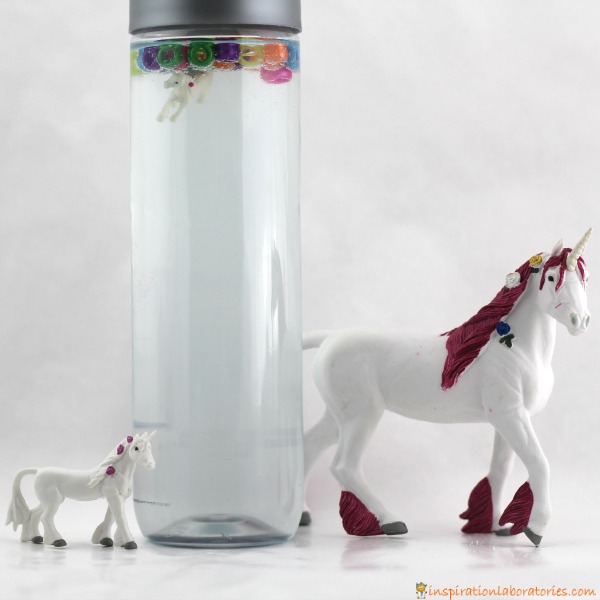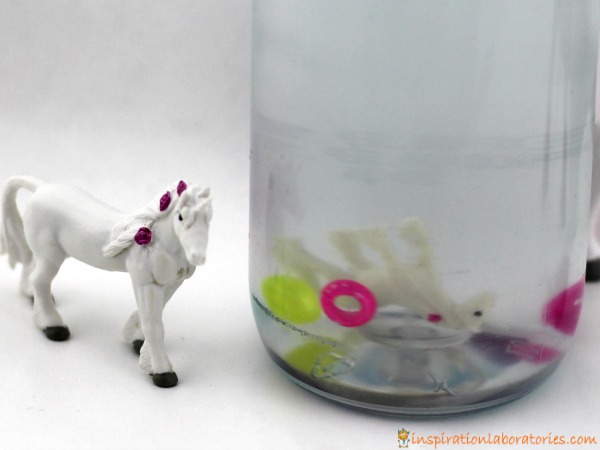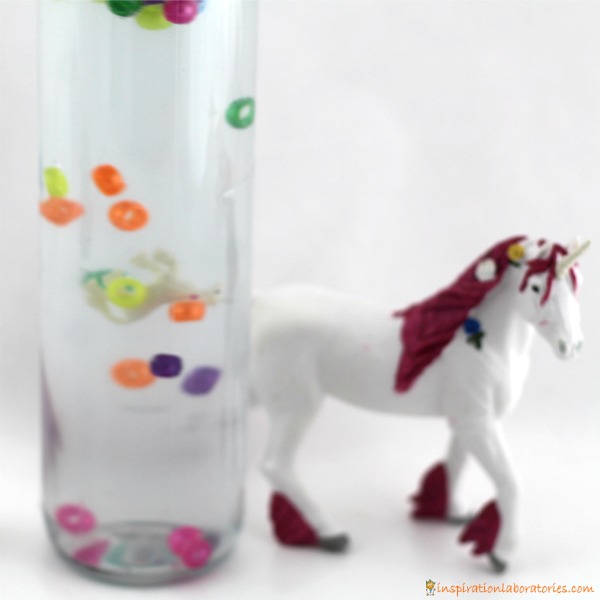Unicorn Cartesian Diver
Making a Cartesian diver is a classic science experiment for a variety of ages. I like to take the classics and twist them up a little bit. This time I’m using a unicorn as the diver. What will you use? Affiliate links are included in this post.

Cartesian Divers
In the classic Cartesian diver demonstration, you fill up a bottle of water. Add your diver to the water. The diver will float just below the surface – almost on the verge of sinking. Squeeze the bottle and the diver sinks. Let go and he rises to the surface.
The demonstration is used to talk about density, gas laws, and buoyancy. The Cartesian divers have a pocket of air. When the bottle is squeezed, the pressure inside the bottle increases. This causes the pocket of air to compress and the density of the diver increases. The diver sinks. When the bottle is released, the pressure decreases and the pocket of air expands causing the density of the diver to decrease and the diver returns to the surface.
Unicorn Cartesian Diver
I added a unicorn (from the Good Luck Minis Fantasy Pack sent to us from Safari Ltd) to a bottle of water. The mini unicorn sank. It was more dense than water. To make the unicorn float, I added salt to the water. I adjusted the concentration (by diluting it with regular water) until the unicorn just barely floated. It actually sank most of the time. If you shake the bottle up, air bubbles will help the unicorn float.

Squeeze the bottle and the unicorn sinks. Let go and it rises to the top again. This works the same way as the classic Cartesian diver. The density increases when air bubbles compress slightly and the unicorn sinks. When the density decreases, the unicorn returns to the surface. Some of the air bubble pop, so the unicorn eventually sinks to the bottom on its own. Just shake the bottle up to get more bubbles.

I added plastic beads to the bottle just to add some extra interest. The beads are also more dense than the water, so they sink. They float when air bubbles surround them.

Watch the video of our unicorn Cartesian diver in action.
More Cartesian Divers to Try
- Science Sparks uses a Cartesian diver and magnets to trap a super hero.
- Steve Spangler Science makes an eye dropper Cartesian diver.
- Make a Cartesian diver with a bendy straw and some modeling clay. (from physics.org)
- Use a pen cap and clay to make this diver from Science Bob.
- Ketchup and other condiment packets work, too. See the diving ketchup experiment from Steve Spangler.
- Buggy and Buddy have instruction for a Cartesian diver made with a pipette as well as a squidy Cartesian diver. How will you decorate yours?
- You can also buy a squidy Cartesian diver from Steve Spangler. Get the regular SQUIDY Cartesian Diver or the Glow-In-The-Dark SQUIDY Cartesian Diver.
More Classic Science Activities for Kids
- Exploding Baggies – Combine baking soda and vinegar to make a baggie explode.
- Try these 10 ways to make a volcano with kids.
- Egg Drop Experiments – Get my tips and suggestions for designing an egg drop experiment plus see how others have set theirs up, too.
Subscribe to the Inspiration Laboratories newsletter. Each issue has exclusive hands-on science explorations for children, a recap of our latest activities, and special resources selected just for you!
![]()

Leave a Reply